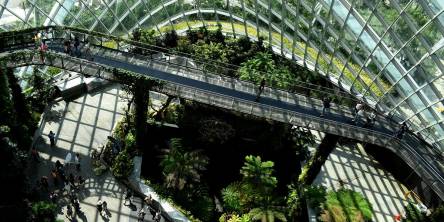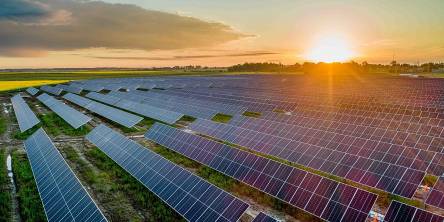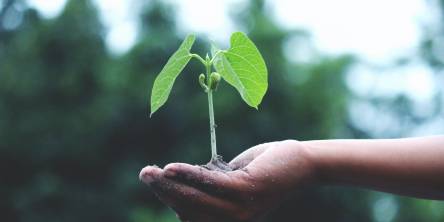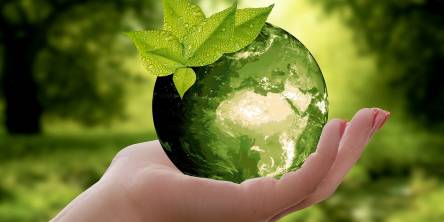4 Reasons Why the Future of Solar Energy is bright in India.
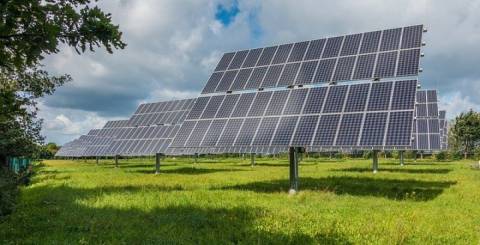
The sun is not just a light source; it is also a significant source of energy. Also known as ‘clean energy’ or ‘renewable energy’ this energy has no adverse effects on the environment. It does not pollute the atmosphere with harmful gasses or exhaust any natural resource.
The fact that solar energy is more convenient and is an unlimited source of energy gives it a great chance of becoming the future of the world.
Especially in developing countries like India, solar energy is acting like a catalyst to help it move forward towards becoming a developed country. A significant increase in the popularity of solar energy has been observed in India. Apart from being available in abundance, it is also eco-friendly and does not emit carbon dioxide and other harmful gases that are responsible for global warming.
Here are a few reasons why the future of solar energy is bright in India:
1. Geographical Advantages
Considering India’s location, it receives approximately 3000 hours of sunlight throughout the year. As a tropical country, India has enough grounds to generate solar energy for itself. States that have very sunlight in abundance in India can generate energy even on cloudy days.
2. Cost advantage
Considering the high installation cost of solar panels in India, it seems more of an investment. A cost that people are ready to pay for freedom, freedom from hefty electricity bills. These days, most people opt for solar installations, leading to more savings and less dependency on traditional sources of electricity. That is one of the many reasons why people are eagerly getting solar panels installed. They’re now able to finally identify a good return on investment from setting up solar panels and consuming solar energy.
3. Employment opportunities.
Solar energy will generate more employment opportunities and will help make India’s economy stronger. A lot is expected out of the sector of solar energy in the next ten years. It could help enhance India's rural economy and eventually contribute to the country's overall development.
4. Easy to establish and maintain in urban areas.
It is easier to install solar plants in urban areas and does not require a lot of maintenance. Since there are no moving parts in a panel, it is easier to maintain once installed. You can use a simple garden hose to clean it or use a sponge with soapy water to scrub them for intensive cleaning.
Upcoming Solar Projects in India:
India already stands third in Asia and fourth in the world with regards to solar power generation. It has a substantial number of solar panels already installed all over the country. Out of which Bhadla Solar Park located in Bhadla village, in Rajasthan’s Jodhpur district is the largest amongst all. Spread across 14,000 acres of land, it is a fully operational power plant installed with a capacity of nearly 2,250 megawatts.
India can possibly depend entirely on solar energy by installing more solar plants. To achieve independence from electricity, the Indian government is promoting and advocating the installation of solar panels on a large scale. Keeping in mind all the benefits and advantages it has over electricity, the Indian government has lined up several policies and regulations to boost renewable energy prospects in the Indian market.
The government is coming up with certain tax reliefs and schemes such as Pradhan Mantri Kisan Urja Suraksha evam Utthan Mahabhiyan Yojana (PM-KUSUM), CPSU (Government Producers) Scheme - Phase II, and Solar Rooftop Phase II program, which aims at the improvement of the generation as well as the acceptance of solar energy in the country—keeping in mind all the facts and figures a lot is expected out of the solar energy sector in India like, increasing the scope for employment, growth, and overall development of the country.
Similar Articles
The world is rapidly developing, and the energy sector is in the middle of all these changes. For many years, individuals's homes, vehicles, and industries relied on oil and gas, but now, the shift is toward a green economy.
Discover efficient waste management solutions with advanced compaction technology, reducing costs, environmental impact, and boosting sustainability.
In a world increasingly attuned to environmental sustainability, the funeral industry is embracing practices that align with eco-conscious values. Eco-friendly funerals, or green funerals, are becoming a popular choice for those who wish to honor their loved ones while minimizing environmental impact.
In the last few years, more inclination has been observed towards a sustainable and environmentally responsible way of life. Many factors are driving this trend, some of which are as follows.
Water beads are non-edible colorful tiny balls that are made by a combination of water, acrylic acid, sodium hydroxide, and a water-absorbent polymer. They are extremely relaxing, soft, and small, roughly the size of a blueberry.
Many people are installing solar panels on their property to provide electricity. Doing so may improve your environmental footprint and could also lower your utility bills
Climate change is a global issue. Global warming isn't just down to other people's efforts. It is down to all of us. There are steps that we can take to slow it down somewhat. However, it will require an equally remarkable attempt by each of us. If we have any hope of combating what may well be humanity's greatest challenge yet.
Today, several people talk about going green, using organic food, and rejecting plastics, but very few do so. Practical implementation of these ideas is more crucial than its verbal acquaintance
Reuse, Reduce, Recycle. Suppose many businesses and people regard this call. In that case, our environment and this world will become a healthier, safer, and better place to stay in.




